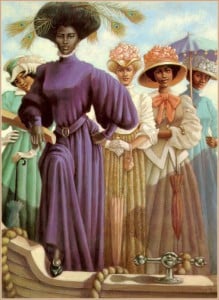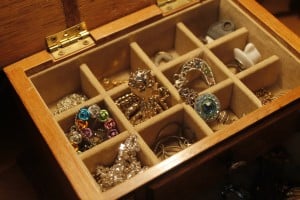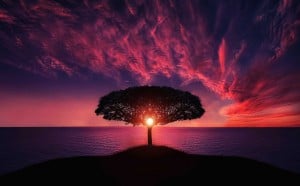I remember the first time I picked up Faerie Magazine ™. “I like faeries!” I chirped, excitement bubbling through as I thumbed the glossy pages. My husband rolled his eyes and walked away, unwilling to share in, what I thought, was a great find. But as one page turned into another, I felt that sinking pit in my stomach. You would not find me there. Every picture, every drawing, every cultural nuance announced boldly
This magazine is Eurocentric.
I put the magazine back and went elsewhere, probably to the science section, where the faces of Neil De Grasse Tyson and Claudia Alexander would greet me with their astronomical delights.
It is no surprise that the modern pagan movement is heavily Eurocentric, and very fond of cultural appropriation for the sake of the ‘exotic’ or ‘ancient’. Plastic Shamans hawk ‘ancient native rituals’ about as ancient as the first tablet PC and Hoodoo and Vodun becomes the latest craze amongst those seeking the spirits of the ‘noble savages’ they’d be too frightened to speak to in real life.
With this in mind I’ve grown use to the European faces staring up at me from pagan magazines. Sometimes in Renn-garb, they smile secure in their history, their place, within this grand religious spectrum; Celts, Gaels, Visigoths, Normans, Saxons, and Jutes- proud warriors and spiritual women all, with eyes the shades of their ancestors. I am not a part of this, nor do I wish to be, but there is the constant reminder, the hint, the faint odor beneath the perfumed veneer; this is what paganism looks like.
And it is consistently reinforced in the imagery our community puts out for mass consumption. Despite there existing goddesses, faeries, mermaids, sea peoples, shadows and shades, in every continent and culture, the black appearance is consistently ignored, or shown as a token to diversity, instead of a reality within our community. According to most pagan magazines I’ve seen we’re the writer of the Voodoo/Hoodoo section or the mammy-esque wise-woman, none too threatening in her sexuality while being meek and comforting to their target audience.
The absence of black faces, especially black female faces, is one of the reasons, I believe, Daughters of Eve is so necessary. As we dive into subjects surrounding black culture, our interactions with society, and our journey within paganism; we provide an outlet and voice for those, often unintentionally, ignored by the pagan community at large. We get to display our fire, our various philosophies, and just as significant, our faces to other pagans, perhaps even younger women who never knew they had a choice when it came to their spiritual/religious beliefs.

Every reader of Daughters of Eve has seen me and, in a small way, knows me; knows I exist and is well aware that my paganism runs just as true through my veins despite there not being a lick of Irish within me to account for it. This tangible reality, my skin the color of sandalwood, and hair like lamb’s wool are an affirmation of the biological diversity of our planet, our cities, and our pagan community.
Many more black Americans will be coming to this community, with their own fears and misconceptions and what better way to welcome them than to prove to them that we are here? Have been here and will be here for years to come?















